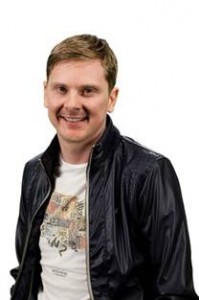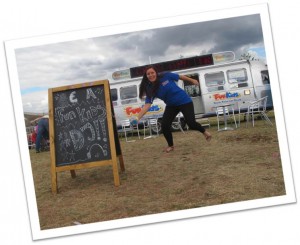In America, our primary exposure to radio created for children is Radio Disney, which arguably was as much a marketing arm for the brand as a radio network. But in the UK, youngsters are listening to an independent station built just for them called Fun Kids.
Aided by a high level of adoption of digital listening, Fun Kids has carved out a niche with programming aimed at 7-12 year-olds. As you might expect, it doesn’t stop with the on-air signal. In fact, a key to the success of Fun Kids is that it distributes and monetizes content on a myriad of platforms, which is exactly what young people growing up today would expect.
In the States, we have both revenue and generational challenges, so there are lessons in the Fun Kids model that are worth consideration. As radio strives to be viable with younger audiences, innovations like Fun Kids can provide indicators of how to succeed with a young consumer media model.
To learn more about how Fun Kids works, in this edition of Radio’s Most Innovative, Folder Media’s Creative Director Matt Deegan takes us behind the scenes and shares his thoughts about the viability of reaching today’s pre-teens with radio.
JM: How did the concept for Fun Kids come about?
MD: In 2005, I was a strategy manager at the UK’s biggest radio group and led an investment round to create a children’s radio station. The way it was set up, the radio company was a shareholder in the venture and also provided the radio programming expertise.
Four years later, I’d left to help set up a digital radio business called Folder Media. The children’s station had been sold and it looked like the new owner, Global Radio, was going to close it down. It wasn’t a focus for them and it hadn’t really generated much money or audience. Our old colleagues got in touch and suggested we buy it.

While a kids radio station had seemed a good idea when it was someone else’s money, now we had to decide if it was a good enough idea to use our own. Our feeling was that the market was sound. There wasn’t any radio for under 10’s but plenty of other media – TV, web, publishing – did well reaching that audience.
And, in the UK, today, 60% of the country listen to some form of digital radio whether that’s DAB (broadcast digital radio), Internet radio or listening through digital TV. Digital listening now accounts for 40% of UK radio’s time spent listening and two thirds of that is through DAB, so there’s a great opportunity to build cume and share if you’re on the right platforms. With radio still hugely popular in the country and growing listening figures for digital radio stations, we decided it was worth a go.
JM: Is the operation run like a traditional radio station?
MD: As a small operator, there’s been a real opportunity to think about things differently. Partly because of cost, but also just considering what we should do. We’ve evolved into running the station in a very different way with, in effect, two teams – a production team and an operations team.
The operations team is responsible for content planning, multi-platform distribution and publishing, marketing, sales and partnerships. In other words, they are tasked with building and growing the brand’s reach. They plan what’s going to happen and then make sure we get the best value from it.
To help make them effective, we have the production team which handles the day-to-day elements of a radio station, which can be time-consuming. They take care of handling the music scheduling, studios and take care of capturing audio and video content.
We’ve even physically separated the teams. It sounds counter-intuitive, but works incredibly well and stops people doing each other’s jobs.
JM: What hurdles did you face in launching the operation, and how did you overcome them?
MD: One of the big challenges has been teaching advertising agencies and clients about the brand and station. Our industry radio measurement system – RAJAR – doesn’t measure anyone under the age of 10, which is a bit of a problem and made us re-think how we prove the size of our audience.
Instead, we’re on a big cross-platform kids survey which has actually opened us up to kids’ TV and web advertisers by ranking our audience numbers against the other platforms instead of just having that closed view of being in the “radio” business.
And we work really hard at super-serving clients. For people who are used to RAJAR figures, at first it’s going to be harder to use us. So we make sure they have a great experience to reward them for taking that first flyer with us.
JM: Why aren’t more radio channels aimed at young kids?
MD: The FM spectrum is constrained, so there’s a limited amount of space for new stations in each market. It’s no surprise that the formats which historically represent the biggest revenue opportunities are the ones that are prioritized. Kids? Not so much.
In the digital radio world, however, that constraint is massively reduced and more diverse formats can flourish. In the US, you can see this with kid’s stations on SiriusXM, Nick Radio on iHeart and Radio Disney re-positioning as a digital radio project.
I think there’s also not much experience in kids radio to draw on, so people tend not to try it. Which is fine, everyone should stay away and leave it to us.
JM: What does the format sound like? Do you play current pop music?
MD: Our programming is split into two. At breakfast (mornings), hometime (afternoon drive), and on weekends, we target 7-12 year-olds (think Nickelodeon or Disney Channel). Musically it’s the safer end of Top 40, big Disney soundtracks and upbeat kids songs. In the middle of the day when those kids are at school, we broadcast pre-school programming that’s more sing-a-long.
JM: How do you handle potentially racy lyrical content or when performers like Justin Bieber run into legal trouble?
MD: With lyrical content we are careful about the songs that get on the air. We’re happy to play Rhianna’s “Diamonds,” we skip “S&M.”
Regarding naughty pop stars, it doesn’t massively affect us. Most kids this age don’t really notice the day-to-day tabloid stuff, and we don’t post about their “issues” online. If it was something really big or a child protection issue, we might take them off the playlist. The bigger issue is core kids artists going in a different direction. Hannah Montana tunes are great, new Miley Cyrus less so.
JM: Your website is very robust. How do your on-air and online efforts buoy each other?
MD: The broadcast radio station is also one of the most cost-effective marketing channels for the brand as a whole. It’s also the platform that ensures we have access to talent that we can then re-version and exploit in other places.
But our audience is natively multi-platform. A 7 year old’s assumption is that every element of a pop star coming in will be available all the places they go. Since our job is to be wherever the audience is, Fun Kids is a cross-platform media brand. The radio station is important, but it doesn’t have primacy over the web, video, or mobile. They all need to promote and support each other.
Instead, we try to think in terms of a content pipeline. A guest coming in likely means a specific video, a radio interview, a visualized radio interview, photos, a text write-up, social promotion, and on-demand audio. The team’s job is to create and deploy that material in a way that reaches the most people through our different distribution options.
JM: What role does social media play for Fun Kids?
MD: YouTube is probably the biggest non-owned media we’re involved with. We have five separate channels from a general station channel to a videogame channel hosted YouTuber-style by our breakfast presenter.
In the UK, there is a popular ‘Instagram for kids’ app called PopJam and we have 50,000 followers. We post fun, engaging images that promote station content, as well as silly pictures and play-along games. We also integrate with a kid’s online world called Bin Weevils. We broadcast a Bin Weevils-based show on the weekends and that’s meant the station can be listened to “in-world.” It’s turned out to be one of the strongest discovery mechanisms for the station and brand. It also won a marketing award, beating national FM stations.
When it comes to platforms like Facebook or Twitter, children under 13 aren’t supposed to be on them (even though many are). So we position that content as being for the parents. The material will be things we’d like them to share (in person) with their kids and fun “life as a parent” content.
 JM: The station has hosts. What coaching or direction do you give them for communicating with the audience?
JM: The station has hosts. What coaching or direction do you give them for communicating with the audience?
MD: We have seven hosts on the station, for most it’s one of their first jobs. We work very closely with them so they know how to reflect the station sound and bring out their own individual personalities. We also make sure they spend time with our audience at events and on school visits so they stay connected with what kids are interested in.
Our presenters are also multi-platform like the brand. They do video and event work and many have columns in kid’s magazines. With five to ten minutes of speech an hour, there’s no room for “that was, this is” hosts.
JM: Could a version of this station succeed in the States?
MD: We have a decent number of listeners tuning in from across the world, so we know there’s a demand. I’d probably say that Radio Disney has a pretty good head start and they’d be a formidable competitor to take on. U.S. listeners are welcome to download the Fun Kids Weekly from iTunes.
JM: And what’s the revenue model for Fun Kids?
MD: It’s monetized like a regular radio station with spots, sponsorships, and paid-for contesting. In addition, there’s a good chunk of revenue from online with display, integrations, and pre-roll video content. We also create bespoke video content for clients though our Fun Kids Toy Club YouTube channel. This exists in YouTube but is also talked up on-air and reflected on funkidslive.com.
JM: There is an ongoing concern that younger people are not drawn to the radio. What do you see?
MD: Kids will only be interested in radio if we make radio for them that they want to listen to. We don’t have a god given right for radio to be popular forever. We need to work at it, making sure there’s content they want to consume. If you don’t try, you can’t moan that kids aren’t tuning in.
JM: Are there any innovative or unique radio-related efforts that have caught your attention?
MD: Here in the UK, Global Radio has taken their under-performing indie rock station XFM and, rather than flipping the format, decided to make a major investment. After tweaking the format a bit (it’s now called Radio X), they’ve significantly grown its digital distribution, hired some of the biggest personality presenters in the country, and are re-launching with a multi-million pound marketing campaign. It’s the polar opposite of what tends to happen nowadays and look forward to them to being rewarded for the enthusiasm.
JM: What advice would you give to someone with an innovative new idea that isn’t sure how to get started?
MD: First, it’s important to have learned everything about the sector you’re going into. Who else is doing similar things? What’s gone well and less well for people in that sector? What do your potential customers want? What’s missing in the market? It doesn’t cost much money to become an expert in an area before you get going.
When you have your idea, work out what the smallest execution of it can be, the minimum viable product, build it and use that to test.
And find like-minded individuals who can help. Don’t be worried about people stealing your idea. Ideas are easy. It’s execution that’s tough. The more people you talk to about it, the more views you’ll have. You don’t have to agree with them, or think that they’re right, but it will help you understand your idea better and how to describe it to the world.
Thanks to Mike Stern for writing this week’s edition of RMI.
INNOVATION QUOTE OF THE WEEK
All children are artists. The problem is how to remain an artist once he grows up.
Pablo Picasso
More of Radio’s Most Innovative
- Radio’s Most Innovative: Dan Vallie, National Radio Talent System
- Radio’s Most Innovative: Dr. Demento
- Radio’s Most Innovative: GeoTraffic
- Radio's Most Innovative: High School Radio Day
- Radio’s Most Innovative: “Sexually Speaking” with Dr. Ruth Westheimer
- What To Do If Your Radio Station Goes Through A Midlife Crisis - April 25, 2025
- A 2020 Lesson?It Could All Be Gone In A Flash - April 24, 2025
- How AI Can Give Radio Personalities More…PERSONALITY - April 23, 2025






Target service and “mass appeal niche programming” is excellent. Having been there & done that with my millennials, Kuddos to the Kiddos! Now, as an
active CBM – Certified Media Boomer – it’s time to call out media buyers and operators who have an misplaced “thing”against 45-74s. Our important age group has grown up on and conditioned to love RADIO – aka Audio Delivery. We
cherish our remaining vinyl, go to concerts, thrive on social info and are far more involved than our parents, with more spendable dollars than any other demo. Classics, modern standards, popular jazz/classical/folk, with controlled podcasts on current topics. Make sense? Make dollars! Thanks, again, Fred! Clark
Clark, it is much easier for us programmers to create content than it is for the sale team to sell. And as you (and others) point out, that has limited radio’s ability to offer more diverse formats, serving broader audiences. The hope was that the Fun Kids profile might inspire some innovation on the HD side of the street or other initiatives even on the network level. Thanks for the comment.
It’s much newer, but you may want to also take a look at Australia’s Kinderling Kids Radio (https://www.kinderling.com.au), which is carried on DAB+ by Southern Cross Austereo.
Eric, I’ll check it out. And is this a trend (outside the US)? Thanks for the comment.